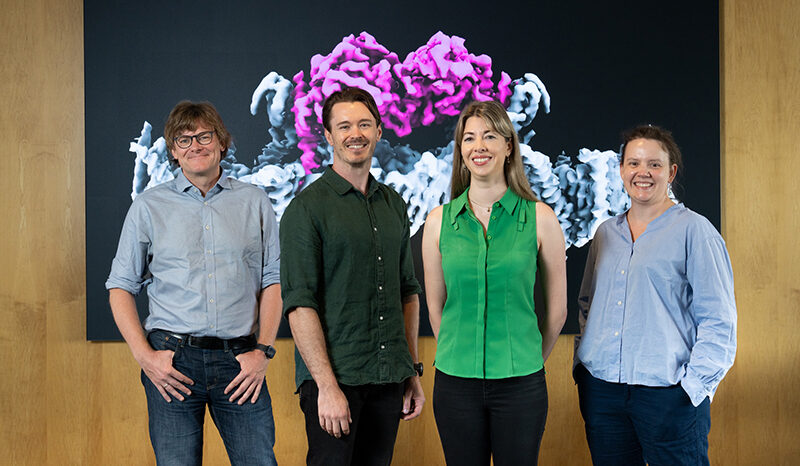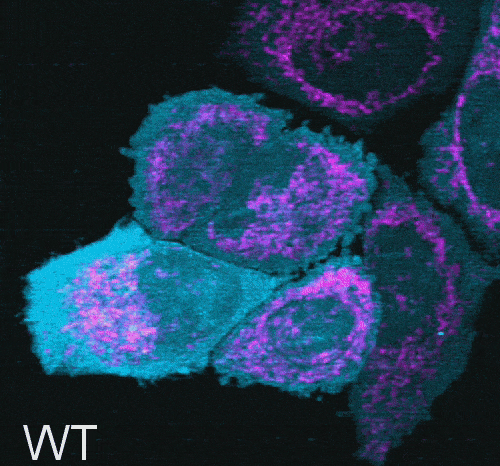Callegari S, Kirk NS, Gan ZY, Dite T, Cobbold SA, Leis A, Dagley LF, Glukhova A, Komander D. Structure of human PINK1 at a mitochondrial TOM-VDAC array. Science. 2025;388(6744):10.1126/science.adu6445
Mobbs JI, Black KA, Tran M, Burger WAC, Venugopal H, Holman TR, Holinstat M, Thal DM, Glukhova A. Cryo-EM structures of human arachidonate 12S-lipoxygenase bound to endogenous and exogenous inhibitors. Blood. 2023;142(14):10.1182/blood.2023020441
Gan ZY, Callegari S, Cobbold SA, Cotton TR, Mlodzianoski MJ, Schubert AF, Geoghegan ND, Rogers KL, Leis A, Dewson G, Glukhova A, Komander D. Activation mechanism of PINK1. Nature. 2022;602(7896):10.1038/s41586-021-04340-2
Draper-Joyce CJ, Bhola R, Wang J, Bhattarai A, Nguyen ATN, Cowie-Kent I, O’Sullivan K, Chia LY, Venugopal H, Valant C, Thal DM, Wootten D, Panel N, Carlsson J, Christie MJ, White PJ, Scammells P, May LT, Sexton PM, Danev R, Miao Y, Glukhova A, Imlach WL, Christopoulos A. Positive allosteric mechanisms of adenosine A1 receptor-mediated analgesia. Nature. 2021;597(7877):10.1038/s41586-021-03897-2
Glukhova A, Draper-Joyce CJ, Sunahara RK, Christopoulos A, Wootten D, Sexton PM. Rules of Engagement: GPCRs and G Proteins. ACS Pharmacology & Translational Science. 2018;1(2):10.1021/acsptsci.8b00026
Draper-Joyce CJ, Khoshouei M, Thal DM, Liang Y-L, Nguyen ATN, Furness SGB, Venugopal H, Baltos J-A, Plitzko JM, Danev R, Baumeister W, May LT, Wootten D, Sexton PM, Glukhova A, Christopoulos A. Structure of the adenosine-bound human adenosine A1 receptor–Gi complex. Nature. 2018;558(7711):10.1038/s41586-018-0236-6
Liang Y-L, Khoshouei M, Glukhova A, Furness SGB, Zhao P, Clydesdale L, Koole C, Truong TT, Thal DM, Lei S, Radjainia M, Danev R, Baumeister W, Wang M-W, Miller LJ, Christopoulos A, Sexton PM, Wootten D. Phase-plate cryo-EM structure of a biased agonist-bound human GLP-1 receptor–Gs complex. Nature. 2018;555(7694):10.1038/nature25773
Liang Y-L, Khoshouei M, Radjainia M, Zhang Y, Glukhova A, Tarrasch J, Thal DM, Furness SGB, Christopoulos G, Coudrat T, Danev R, Baumeister W, Miller LJ, Christopoulos A, Kobilka BK, Wootten D, Skiniotis G, Sexton PM. Phase-plate cryo-EM structure of a class B GPCR–G-protein complex. Nature. 2017;546(7656):10.1038/nature22327
Glukhova A, Thal DM, Nguyen AT, Vecchio EA, Jörg M, Scammells PJ, May LT, Sexton PM, Christopoulos A. Structure of the Adenosine A1 Receptor Reveals the Basis for Subtype Selectivity. Cell. 2017;168(5):10.1016/j.cell.2017.01.042
Black KA, Mobbs JI, Venugopal H, Dite TA, Leis A, Wong LL, Dagley LF, Thal DM, Glukhova A. Structural basis for Porcupine inhibition. Communications Chemistry. 2025;8(1):10.1038/s42004-025-01726-5






